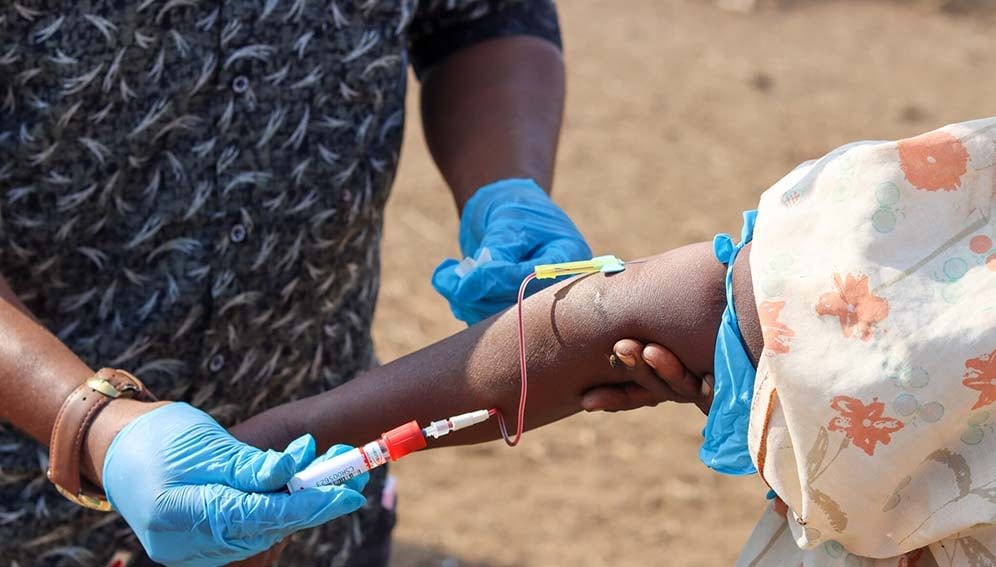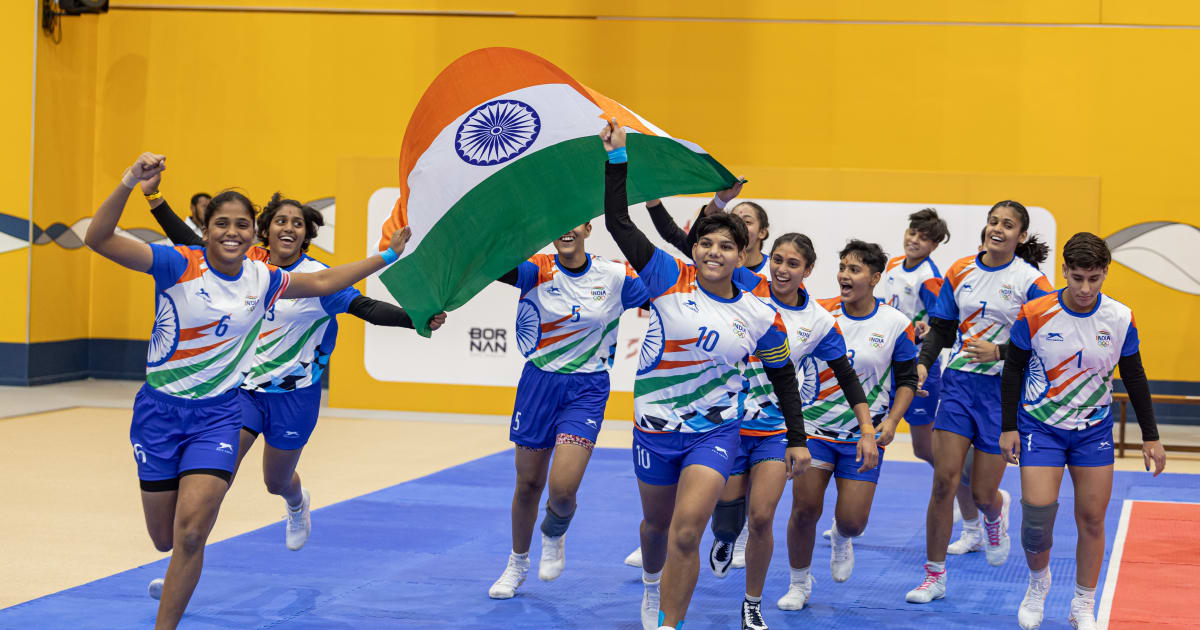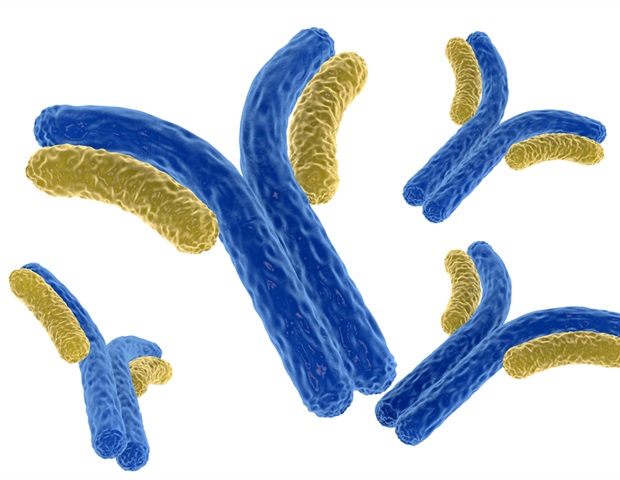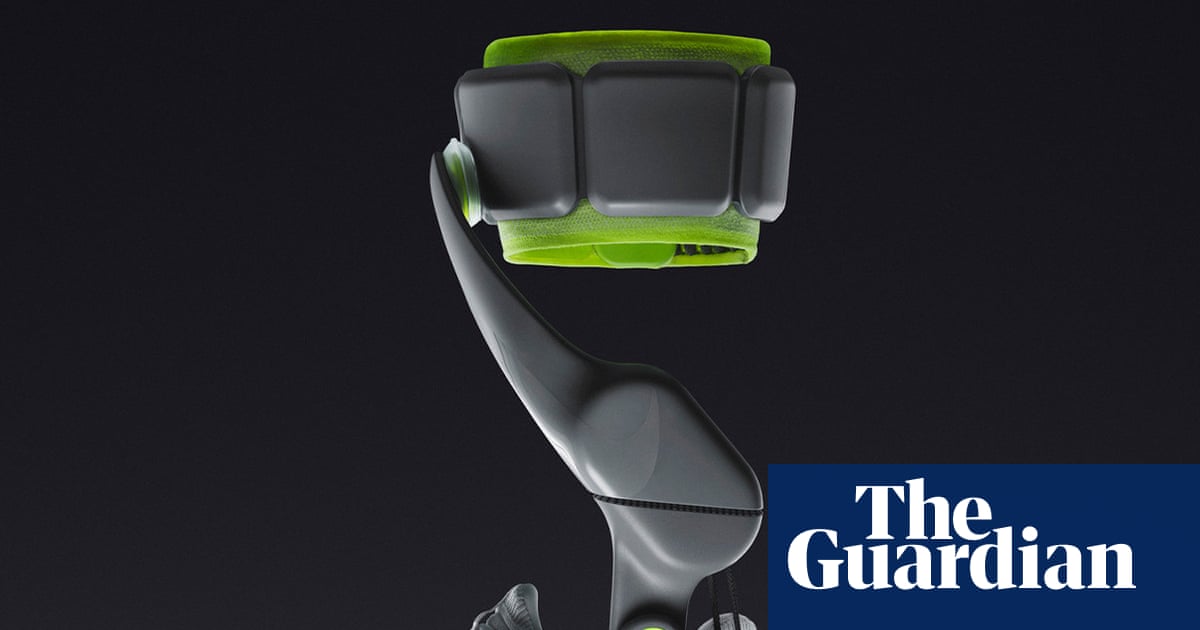Olubukola Ayodele/LinkedIn
Olubukola Ayodele, Breast Cancer Lead at University Hospitals of Leicester NHS Trust, shared a post on LinkedIn:

Olubukola Ayodele/LinkedIn
Olubukola Ayodele, Breast Cancer Lead at University Hospitals of Leicester NHS Trust, shared a post on LinkedIn:

[DAKAR, LONDON, SciDev.Net] Senegal has launched a nationwide, multisectoral response to tackle a growing outbreak of Rift Valley fever (RVF), warning affected communities against risky self-medication.
The coordinated campaign brings together…

Quality analytics has long been seen as key to better understanding benefits utilization and developing strategies that drive up engagement, but getting the analytics hasn’t been easy.
Whether manually crunching data, waiting for partners to provide reports or working with dashboards, extracting and analyzing data can be arduous and time-consuming.
Fortunately, AI agents such as ChatGPT and Len AI, Marsh McLennan’s proprietary AI technology, now allow datasets to be analyzed using natural language so that benefits data can be easily reviewed to uncover valuable insights. Not surprisingly, 50% of employers are already using AI for benefits purposes, and a further 48% plan to use it within the next one to three years. Advanced and predictive analytics, along with personalization, are the main drivers of this trend.[1]
On a practical level, the reduction in administrative burdens is significant. For example, HR teams can see benefits uptake and engagement rates and identify any utilization issues that could be impacting budgets. This frees up time for HR to focus on more strategic initiatives such as understanding how preventative benefits are impacting claims.
Predictive analytics presents a compelling use case for AI, especially in the health and well-being arena. For example, by predicting how many people are likely to fall sick within the year, benefits strategies can be optimized to account for medical inflation and budget considerations in the context of ever challenging resource constrained environment.
This requires building scenarios and simulating the likely outcome of different benefit strategies. For example, if you anticipate a high number of musculoskeletal (MSK) claims, how many are likely to result in longer-term rehabilitation and how might uptake of a preventative benefit change that?
It also requires distinguishing between society-wide issues and those specific to your organization. At Mercer Marsh Benefits (MMB) we can overlay organizational data with huge data sets to help clients identify pockets within their organization that are bucking broader trends.
An even deeper dive can be carried out to identify which clinical pathways, and even healthcare providers, are generating the most successful outcomes. This allows employers to better educate employees on the most effective pathway, hospital, public program or benefit for their needs.
This level of personalization is welcomed by employees, with over two thirds saying they would share their health information with a confidential third party to receive tailored benefits information, or personalized health recommendations.[2]
Of course, no benefit strategy will deliver optimal results if employees are not engaged and aware of their options. AI has a meaningful role to play in increasing utilization by replacing one-size-fits-all communications with compelling content automatically generated and tailored to different employee demographics.
Generative AI chat assistants are now being used by benefits platforms like Darwin with the AI Chat Assistant, to allow employees to get answers to benefits questions such as “Can I add my wife to my dental policy?”. Allowing employees to easily access information and execute tasks not only saves them time and boosts engagement but improves the user experience.
On another level, personalization helps employees discover benefits they didn’t know existed or hadn’t considered. For example, individuals who are looking to exercise more and improve their fitness levels can be signposted towards benefits that can help them achieve these goals, such as gym memberships and wellness programs.
To give employees confidence to share relevant, personal data, it’s important to educate them on the ways data is anonymized or de-identified to protect their privacy. This data is often used to build personas to improve the relevance of what is showcased to employees thereby increasing uptake.
Insights generated by any analytics application are only as good as the data that underlies the analysis. Data integrity is critical as is the governance and processes that sit around it.
Increasing benefits choice used to mean increasing benefits administration, but AI can ingest data more effectively, automate routine tasks, carry out compliance monitoring and reduce human error.
For example, if you had a reimbursement fund to allow people to claim for well-being activities, AI can not only check the receipt to ensure it’s not a duplicate claim, but check the provider actually exists, that the service provided is covered, and that the employee hasn’t gone over their allocation.
Similarly, it can be used to automatically close payroll, enroll new joiners, and run other benefits processes, to significantly reduce administrative overheads. This gives already stretched HR teams more time to focus on more strategic initiatives.
Any AI initiative is only as good as the underlying dataset and building the right AI foundation to centralize and connect that data is critical to success. 88% of employers who centralized their benefits software in this way say they can respond quickly to change, with 73% of those saying they are on track to achieve their employee engagement targets.[3]
AI not only has the potential to improve benefits insights and administration for employees and employers, but it also has the potential to transform the employee experience to create a healthier, more satisfied workforce. As such, half of employers are currently using AI to forecast future benefits needs based on workforce trends, and 58% are personalizing benefit recommendations and communications based on AI insights with a further 33% planning to do so by 2026. This shows a significant move towards employers increasingly leveraging data not only for tracking and forecasting, but also for personalization and improving wellbeing.[4]

India swept the kabaddi gold medals at the Asian Youth Games 2025 in Manama, Bahrain, after both the boys’ and girls’ teams topped their respective podiums on Thursday.
Both teams went up against the Islamic Republic of Iran in their…

Noah Baumbach is set to receive the director tribute at the 2025 Gotham Film Awards, The Hollywood Reporter has learned.
The three-time Gotham Award winner will be recognized for his overall career and latest film, Jay Kelly, starring…

SpaceX will launch its record-setting 139th mission of the year today (Oct. 23), and you can watch the action live.
A Falcon 9 rocket is scheduled to lift off from Florida’s Cape Canaveral Space Force Station today, during a four-hour window that…

The actor Stellan Skarsgård has revealed that he suffered a stroke three years ago and has been finding filming considerably more challenging since.
Speaking to Vulture to promote Sentimental Value, Joachim Trier’s Oscar-contender about a film…

A new potential antibody therapy strategy which restricts the growth of treatment-resistant breast cancers has been developed by scientists.
The King’s College London discovery, published today, could provide new treatment options…

The entrance to Nike’s swish global headquarters in Beaverton, Oregon is paved with rough cobbles, designed to remind employees to watch their step when they go forward.
Last summer, though, not even the world’s biggest sports brand could stop itself from taking an almighty tumble.
Over the course of one July day in 2024, Nike’s share price plummeted by $28bn – the worst single-day performance in the company’s history – after it revealed that second-quarter sales were down 10%.
There were headlines proclaiming that Nike was in crisis. That it had lost its cool, become either too woke, too safe, too conservative or too cumbersome, depending on their political stripe and reading of the situation. To no one’s surprise, its chief executive, John Donahoe, stepped down.
True, Nike was still worth around $100bn – more than twice the value of its closest rival, Adidas, and even further clear of Puma, Lululemon and New Balance. And, yes, the cost of living crisis didn’t help. But much of the pain was self-inflicted.
Just over a year later I am sitting with Nike’s new president and chief executive Elliot Hill, talking about how he intends to turn the company around with the help of some wild new innovations, including the world’s first motor-powered running and walking shoe.
Soon I will also hear about “mind shoes” that help Erling Haaland focus before matches, a self-inflating winter jacket that Team USA will wear at the Winter Olympics, and technology that aims to help England’s footballers at the World Cup.
Before then, though, I throw Hill, a huge soccer and baseball fan, a curveball. Might Nike’s recent kicking actually turn out to be a good thing? Both for consumers, who now have more choice from upstart brands such as ON and Hoka, and for his company – as it has forced it to raise its game?
Hill laughs, then leans in. “Trust me, I would have preferred not to go through the kicking,” he says. “And this one happens to be a pretty big kicking. But I do think it helps us refocus on why we exist, and is a rallying cry for us as a company.
“I think it helps us get sharper. We’re at our best when we’re competing. And not only competing, but competing and winning.”
Hill’s answer is open, honest and authentic: a face that Nike hasn’t always shown to outsiders. And the 62-year-old is just as direct when it comes to his plans to turn the company round using sport and trusting in new ideas.
“On my first day, I stood up on stage and my first slide said we are a sport company and we are a growth company, and they’re not mutually exclusive,” he says. “And when we invite eight billion consumers into the world of sport, I like our chances of growing.
“I know it sounds simplistic,” adds Hill, who joined Nike as an intern in 1988 and came back last October having retired in 2020. “But the response from around the world was: OK, we’re back to sport. We exist to serve the athletes. And when we do that well, that usually translates into innovative products, emotional storytelling, and then it pays off at retail.”
Internally Nike is signalling that fresh direction with a six-word mission statement: “Create Epic Shit, Make Athletes Better.”
It is provocative and bombastic. In other words, classic Nike. But, as Phil McCartney, Nike’s chief innovation, design and product officer, explains, it is also a tribute to one of its most famous athletes.
“Create epic shit is something that we got from Kobe Bryant,” he says. “He used to walk the halls here and say: ‘Are you creating epic shit?’ It’s a standard of excellence. It has a bit of an attitude to it. And we’re already starting to use it when we look at our innovations. Is it that? If it’s not, then we shouldn’t do it.”
Not so long ago, McCartney, who grew up in Wallsend in the north-east of England and was once a talented Great Britain runner, remembers an acquaintance telling him that the brand had become “big, dumb and slow”.
“And it sort of struck a chord with a lot of us,” he says. “Because that’s not who we are, it’s not how we want to operate. And it’s definitely not our future.”
Later that morning I am standing outside Nike’s LeBron James Innovation Centre, a 750,000-square-foot facility which has 400 motion-capture cameras, nearly 100 force plates and male and female sweat-testing dummies, waiting to stare into that future.
First I put on a normal-looking pair of super shoes. Then I attach a prototype device containing a motor to my ankles, calves and the shoes themselves. After that, a senior Nike biomechanical engineer, Alison Sheets, presses a button, and the device starts to whirr and fit more snuggly around my legs.
I feel like Robocop, and initially when I walk I move like him too. But when I start running and Alison ramps up the power via an app, I suddenly turn into Forrest Gump. Despite very little effort, I am running far quicker than my effort level – and my mind – tells me I should be.
It is more than a little weird. But also a whole lot of fun. Incredibly, at one point I jog up the 150-metre ramp on Nike’s campus which has a 15.63% incline – without being remotely out of breath. (If evidence didn’t exist, I wouldn’t blame you for wondering which substances in downtown Portland I had been inhaling.)
“We’re actually putting a robot on your body,” explains Michael Donaghu, Nike’s VP of create the future, emerging sport and innovation. “And we want that robot to be your best friend.”
What makes all this even harder to compute is that I happen to have been hobbling around with a heavily bruised little toe. Yet the shoe seems to take most of the impact off the joint, like an anti-gravity treadmill, allowing me to run with only minor pain.
Nike calls this motorised shoe Project Amplify and likens it to an ebike for feet, allowing the general population – rather than serious runners – to run or walk far quicker than they otherwise would do.
How much quicker? In testing, the company’s researchers found that athletes experienced anywhere from a 9-22% improvement in metabolic effort. In other words, like going from a 12-minute mile to a 10-minute mile, using the same effort.
Donaghu says that Nike engineers had been working on various iterations of the device for years, but it was Hill’s return that made it happen. “We sat down, pitched him on what the idea was and unflinchingly, he was like: ‘This is absolutely what Nike should be about,’” he says. “Nobody here is crazy. We just live in the future and have bigger dreams.”
At next summer’s men’s World Cup, Nike’s sponsored teams, including England, the US and Brazil, will be wearing kits with a new Aero-Fit material which – Nike says – will allow players to feel cool even in very hot and humid conditions. For good measure it is also made from 100% textile waste.
Before then it will release the Air Milano, a jacket that inflates in 30 seconds and can generate warmth levels that range from a lightweight hoodie to a mid-level puffer, and which will be worn by Team USA at the Winter Olympics.
Finally there is the Nike Mind, a shoe and slider that contain cushioning nodes which press on the sensors in the feet and – the company says – improve focus when worn.
Haaland, the Manchester City striker, and WNBA basketball star A’ja Wilson have been using the shoe, which took nearly a decade to develop, to prepare for matches. Nike insists it has the science to back up its claims.
“Using tools like EEG, we’ve measured changes in brain activity linked to focus and presence,” says Matthew Nurse, the company’s chief science officer. “That’s the first time we’ve been able to show – and prove – that footwear construction can influence how the mind works.”
However Donaghu, who joined Nike in the late 80s and even worked with the co-founder Bill Bowerman, insists this is just the start.
“We’re like kids in a candy store here,” he says. “And there’s something really magical going on. We sweat getting it right. And worry about making money later. That’s a lesson we learned from Bill Bowerman. Phil Knight [Nike’s other co-founder] really did care about building a company that was solvent and could make money. Bill Bowerman didn’t give a shit about making money. He just wanted to make athletes good. I love having both of those angels on our shoulders.”
Part of the success, he adds, comes from Nike having an innovation kitchen – a place he describes as “very non-hierarchical playground” – where about 30 people from all parts of the company throw ideas around.
“We’re the kids that want to know the things that others just have hunches about,” he says. “Oh, we don’t have a mind scientist? We’re going to hire a mind scientist in the kitchen. That’s how we push the ball forward.”
Nike has invited the Guardian to Beaverton to unveil its new innovations, but also to show the outside world that it is changing. And so towards the end of our conversation I ask Hill about Allyson Felix, one of America’s greatest Olympians, who in 2019 revealed Nike’s threat to cut her pay by 70% if motherhood affected her future athletic performance. Three months later Nike changed its stance to guarantee athlete’s pay and bonuses for 18 months around pregnancy, and three other brands soon followed suit.
I also mention the former Nike Oregon Project coach, Alberto Salazar, who was given a four-year doping suspension in 2019 and then a lifetime ban for sexual and emotional misconduct, issued by the US Center for Safe Sport.
Every company makes mistakes. But Nike has made a lot down the years without always owning up to them. Will it really be different under his watch?
“I think that consumers today want companies to be more vulnerable, authentic, real, and upfront,” Hill replies. “And here’s what I would say as the leader of this company. The entire world has my commitment to be real – about the situations when we get it right, and then there will be moments when we get it wrong. That’s just inevitable in the world of business. But I think it’s how we respond in those moments when we get it wrong that matters most.”
Hill is more guarded when it comes to discussing Donald Trump’s tariffs, which will cost the company about $1.5bn this year. But is there anything Nike can do to alleviate the burden?
“We have a pretty diverse global supply chain and expenses, and we’re pulling all the levers,” he says. “But my hope is that it doesn’t impact the world of sport.
“Because if you think about it, it’s not just Nike. It is helmet manufacturers, baseball bats, equipment, and it all trickles down to the consumer. The accessibility of sports today is already challenged, and I think it will make it even more challenging for the average American. That’s the part that I’m nervous about.”
Before travelling to the US, I spoke to a couple former Nike employees who both had positive things to say about Hill. One even insisted, somewhat implausibly, that when he was appointed last October, people literally cried with relief.
Certainly something had to be done to turn around the company’s fortunes. For years analysts had warned that Nike was relying too much on colour variations of older favourites – especially Jordans, Dunks and Air Forces – like a classic 80s rock station spinning the same old tunes even when the hype has faded.
Meanwhile Nike put a huge amount of focus on direct-to-consumer sales – meaning that fewer of its products were in stores.
That allowed the likes of Hoka, ON, and others to move in. And when the new wave of runners, often women in their 20s and 30s, flocked to join run crews after the pandemic they often turned to those brands first.
Since returning to Nike, Hill has focused on rebuilding relationships with retailers, with one of its largest customers, JD Sports, saying last month that Nike was “doing all the right things” to revive demand.
Hill has also gone back to having separate departments for each sport, such as running, football and basketball – as opposed to Donahoe, who organised things by men’s, women’s and kids’ categories which led to bottlenecks when it came to innovation. Now, Hill says, teams are quicker to react and get products to market.
He concedes that there is still plenty of work ahead. But in its recent earnings report there were some green shoots, with a number of well-received releases helping the running division grow by over 20% in the last quarter.
Football is also a huge passion for Hill, who was raised by a single mum in a blue-collar neighbourhood in Texas. In fact such was his love of the game he made a small investment in the Italian Serie B side Venezia when he initially retired in 2020, only to give it up when he returned to Nike last year.
Hill also remembers being “completely blasted” by some of his European colleagues in 1998 when he suggested they could do more to promote the women’s game. “They were like: ‘No one cares about women’s football,’ And then fast forward to today, almost 30 years later, and it’s phenomenal.”
As we chat he casts his mind back to the Women’s Euros this summer. During the final he sat with Football Association officials with England 1-0 down against Spain and looking like they had nothing left in the tank.
“I was yelling at them: ‘We’ve got to believe,’ he says. “Because you can just see it with the English. They’ve had their hearts broken so many times, especially in those big moments, and never winning one outside of the country, right? You can see it. So I literally started to yell at them: “Come on everybody, let’s go, come on, we got this.’
“And then, of course, when we won – everybody, the joy! And that’s the beauty of sport,” adds Hill, who says he wants Nike to absorb the lessons from the Lionesses’ resilience. “It’s those moments that define an athlete, a team, a country, and in our case, a company. And it didn’t hurt that Spain was an Adidas team.”
Before I leave Oregon I speak to Tony Bignell, a Briton who was a key figure in Eliud Kipchoge’s Breaking2 marathon project and Faith Kipyegon’s Breaking4 mile attempt as well as the game-changing super shoes that powered them, and is now Nike’s chief innovation officer. The company, he insists, is getting back on track despite a few “dramas” in recent years.
“It’s hard sometimes when you’re trying to help an elite athlete as well as somebody like my mum, who wants to walk the dog around the block,” he says. “But under Elliot the handbrake is off, and we feel loose. It’s amazing how one person can make that difference.”
“I wish more people could understand the people in this building because they’re not corporate, whatever you might read about Nike,” he adds. “It’s just a good human place to be.” Somewhat ironically a company that tells stories better than most has often failed to get this across.
Meanwhile to the outsider it also seems like there are multiple Nikes. The sports brand that wants to win at all costs, and sometimes takes it too far. The global multinational with 80,000 employees, watching every flicker of its share price. The company that is trying to stay endlessly cool. And the day-to-day numerous super-smart scientists, engineers, and other employees who will happily shoot the breeze, praise rivals, and be open about the state of the company.
However Hill insists that, when you dig into its soul, Nike remains the company set up in 1972 by Phil Knight (the campus in Beaverton has just been renamed in his honour) and Bill Bowerman. The one that was propelled to glory by elevating athletes such as Steve Prefontaine and Michael Jordan, along with a series of innovations that began when Knight began creating shoes with his waffle maker, and selling them out of his Winnebago.
“Those two started this company on a handshake,” says Hill. “They each put $500 in. And they had a simple purpose: we exist to serve the athlete, and to put them at the centre of everything we do.”
More than five decades much has changed. But one time-worn formula remains the same: Create Epic Shit, Make Athletes Better. Keep consumers in love with the Swoosh. Reap the rewards.

Researchers have developed a thin, food-safe coating derived from edible fungus and plant fibers that can make materials such as paper, textiles and wood resistant to water, oil and grease.
The study, published in Langmuir, outlines how…